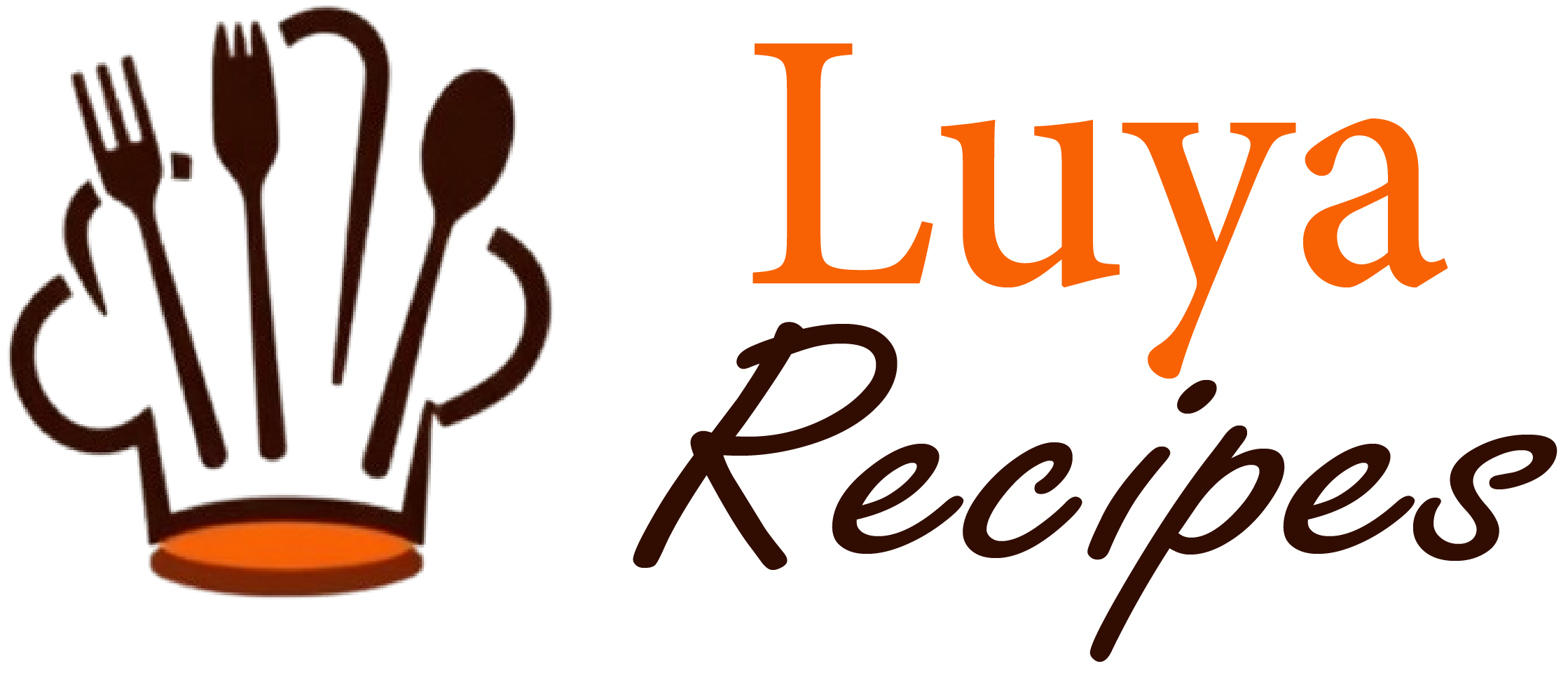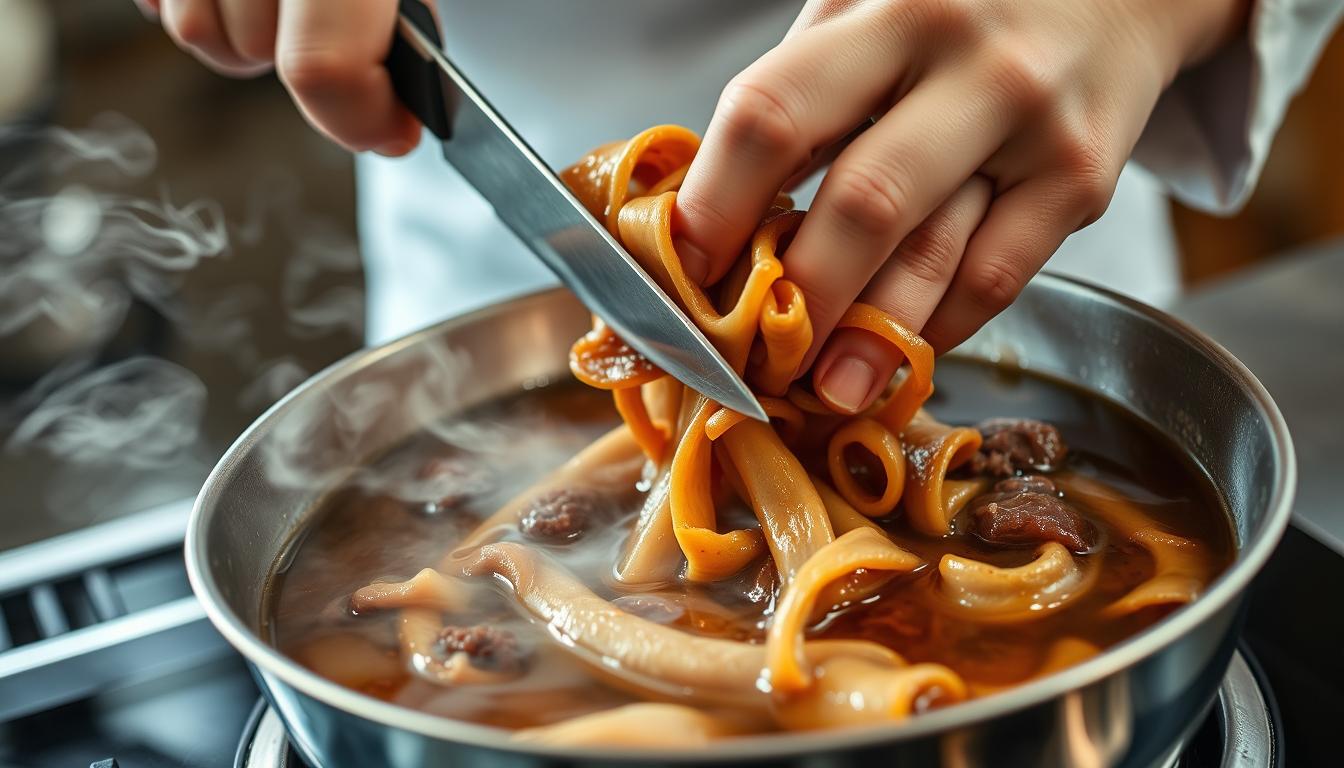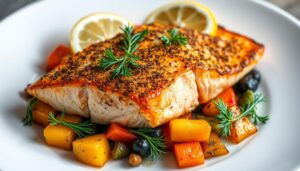Ever thought about turning tough meat into a culinary masterpiece? Beef tendons are a hidden gem in cooking. They can take your kitchen skills from basic to amazing. Learning to cook beef tendons opens up a world of flavors and textures that will amaze you.
This beef tendon recipe is more than just cooking. It’s about understanding an ingredient that links old preservation methods with today’s food world. Each tender bite shares a story of patience, skill, and wisdom passed down through generations.
If you’re curious or passionate about cooking, mastering beef tendon preparation will expand your flavor and nutrition options. You’re about to learn a technique that turns tough meat into a tasty treat.
Table of Contents
Understanding Beef Tendon’s Nutritional Benefits
Exploring a delicious beef tendon dish reveals a nutritious protein source. It’s packed with health benefits. Beef tendons are not just tasty; they’re also full of essential nutrients that boost your wellness.
Collagen-Rich Properties
Beef tendons are a top source of collagen. This protein is key for healthy joints and skin. Research shows collagen can make skin more elastic and support joints.
A 2023 study found that collagen can also help older adults lose body fat.
Essential Amino Acids and Minerals
Your braised beef tendon recipe is more than tasty. It’s also packed with protein, essential amino acids, and minerals:
- Iron for blood health
- Zinc for immune function
- Phosphorus for bone strength
- Glycine for better sleep
Health Benefits for Joints and Skin
Eating beef tendons offers great benefits for your body. Clinical trials show collagen can improve skin hydration and elasticity. It may also reduce wrinkles.
For joint health, beef tendons can help lessen pain from conditions like osteoarthritis.
Bone broth made from beef tendons can deliver up to 9 grams of protein per cup, making it an excellent nutritional supplement.
Traditional Japanese Preservation Methods
In Japan, food is treated with great respect. Even the toughest ingredients are turned into tasty dishes. The idea of mottainai – avoiding waste – led rural communities to find smart ways to preserve meats like beef tendons.
The art of making Asian beef tendon soup came from need and creativity. Shigureni turned hard meat into soft, tasty treats. This method cooks beef tendons slowly in a mix of:
- Sake
- Soy sauce
- Sugar
Crispy beef tendons show off Japanese cooking skills. Over time, people learned to use every part of an animal. This shows their deep respect for food and resourcefulness.
| Preservation Technique | Key Ingredients | Cooking Duration |
|---|---|---|
| Shigureni | Sake, Soy Sauce, Sugar | Several Hours |
| Slow Braising | Broth, Aromatics | 4-6 Hours |
Today, chefs still use these old ways to make Asian beef tendon soup. This connects today’s diners with centuries of cooking wisdom. By learning these techniques, you can make amazing meals from tough ingredients.
Essential Kitchen Tools for Perfect Tendon Preparation
Making a delicious slow-cooked beef tendon stew needs more than just ingredients. The right kitchen tools can make your tender beef tendon recipe amazing. Professional chefs say that using the right equipment is key to getting that soft texture.
Start your cooking journey by picking the best kitchen tools. Each tool is important for preparing beef tendons perfectly.
Pressure Cooker: The Game-Changing Tool
A top-notch pressure cooker is your secret to tender beef tendon. These amazing devices cut cooking time by up to 50%. They turn tough collagen into a soft, tasty treat. Look for models with:
- Multiple pressure settings
- Digital temperature controls
- Stainless steel construction
- Capacity of at least 6 quarts
Essential Cutting and Storage Equipment
When preparing beef tendons, precision is key. Here are the must-have tools:
- Sharp boning knife for clean cuts
- Large cutting board with non-slip surface
- Vacuum sealer for long-term meat storage
- Airtight containers for refrigeration
Temperature Control Mastery
Getting the right temperature is crucial for your slow-cooked beef tendon stew. Here are the tools you need:
- Instant-read digital meat thermometer
- Infrared surface temperature gun
- Programmable cooking timer
With these essential kitchen tools, you’ll be ready to make restaurant-quality beef tendon dishes. They’ll impress even the pickiest food lovers.
Selecting and Cleaning Fresh Beef Tendons
Choosing the right ingredients is key when making a beef tendon recipe. The quality of your dish starts with picking and cleaning the tendons. Fresh beef tendons need a careful eye and specific cleaning methods.
Here’s what to look for in beef tendons:
- Uniform light tan or pinkish color
- Firm texture without excessive softness
- Slightly translucent appearance
- No strong or unpleasant odors
- Minimal excess liquid or moisture
Before cooking, clean your beef tendons well. Start by rinsing them under cold water to get rid of surface dirt. Trim away any visible excess fat or discolored sections to improve flavor and texture.
Here are the steps for cleaning:
- Rinse tendons in cold water
- Pat dry with clean paper towels
- Trim excess connective tissue
- Soak in fresh cold water for 30 minutes to remove impurities
- Drain and pat dry again before cooking
When storing raw beef tendons, keep them in the fridge. Use them within 1-2 days for the best taste. Or, freeze them for up to three months. This way, you’ll always have quality ingredients for your next beef tendon dish.
Quick and Easy Beef Tendon Recipe
Learning to make a tasty beef tendon dish is easy. This recipe turns tough meat into a dish that will wow everyone.
Beef tendons need patience and the right cooking method. The secret to a tender dish is knowing how to cook it and picking the right spices.
Preparation Steps
- Clean beef tendons under cold water
- Trim off any extra fat or connective tissue
- Soak tendons in cold water for 30-60 minutes
- Pat dry with paper towels before cooking
Cooking Instructions
A pressure cooker is the best tool for tender beef tendons. Here’s how to use it:
- Put cleaned tendons in the pressure cooker
- Add enough water to cover the meat
- Set the pressure cooker to high pressure
- Cook for 15-20 minutes
- Let the pressure release naturally for 10-15 minutes
Seasoning Guide
Enhance your beef tendon dish with these seasonings:
- Classic Asian blend: Soy sauce, mirin, sake
- Spicy option: Chili oil, garlic, ginger
- Herb-infused: Star anise, bay leaves, green onions
Pro tip: Cooking for 40-45 minutes makes the beef tendons tender and flavorful. Try different seasonings to find your favorite!
The Art of Double-Boiling Method
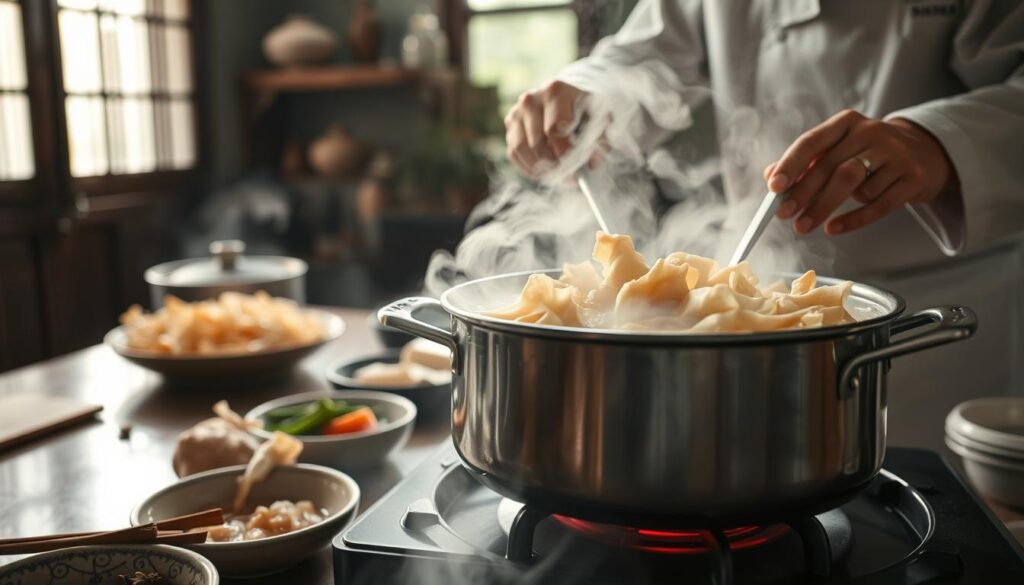
Learning to cook beef tendons is all about mastering the double-boiling method. This traditional Asian cooking technique makes beef tendon soup truly special. It brings out the best flavors and tenderness.
The double-boiling method is all about strategy. The first boil is key: it gets rid of impurities and excess fat. This step makes your Asian beef tendon soup cleaner and more flavorful.
- First boil: Removes blood and fat residues
- Second boil: Tenderizes meat and enhances texture
- Final simmering: Integrates seasonings and develops depth
Professional chefs say keeping the water temperature steady is crucial. This ensures your beef tendons are incredibly soft but still hold their shape.
The secret to perfect beef tendon lies in patience and precise technique.
The cooking time depends on the cut and how tender you want it. It usually takes 2-3 hours. The end result is a dish that’s so tender, it melts in your mouth. It’s a true reflection of Asian culinary art.
Mastering Traditional Braising Techniques
Getting a braised beef tendon recipe right takes time and attention to detail. It’s all about finding the right mix of temperature, seasoning, and cooking time.
Braising turns tough beef tendons into tender, delicious bites. Success comes from mastering the technique and managing heat well.
Temperature Control Tips
- Keep the heat steady at 160-180°F
- Use a digital meat thermometer for accurate checks
- Steer clear of sudden temperature changes
- Make sure the cooking area is even and gentle
Strategic Seasoning Combinations
The right seasonings can make your slow-cooked beef tendon stew stand out. Here are some great flavor options:
- Traditional Asian: Soy sauce, star anise, ginger
- Spicy Fusion: Chili paste, garlic, rice wine
- Herbal Blend: Rosemary, thyme, black pepper
Cooking Time Guidelines
Your braised beef tendon recipe needs patience. Cooking times depend on the size of the tendons and how tender you want them:
- Small tendons: 2-3 hours
- Large, thick tendons: 4-6 hours
- Pressure cooker method: 45-60 minutes
The secret to a perfect slow-cooked beef tendon stew is cooking it low and slow. This breaks down the tough connective tissues.
Testing for Perfect Tenderness
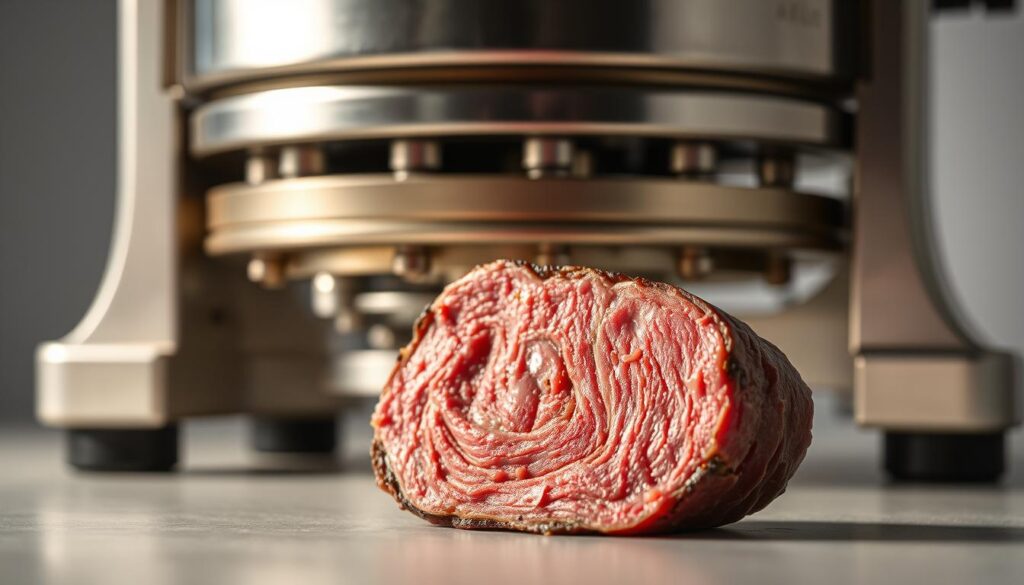
Learning to cook beef tendons well means knowing how to check for tenderness. Your recipe needs careful attention to texture and cooking method.
There are many ways to check if your beef tendon is tender. Chefs suggest a few methods to see if it’s ready:
- Fork Test: Gently insert a fork into the tendon. If it slides in easily, it’s ready
- Cutting Test: Look for smooth, clean cuts without any resistance
- Visual Inspection: Check for a glossy, slightly translucent look
Temperature is key for tenderness. Cooking between 284°F and 320°F breaks down tough tissues. This turns beef tendons into tender, delicious bites.
| Cooking Duration | Tendon Texture | Recommended Use |
|---|---|---|
| 2-3 hours | Slightly Chewy | Stir-fry dishes |
| 4-6 hours | Tender | Stews, braised dishes |
| 6-8 hours | Extremely Soft | Slow-cooked recipes |
Pro tip: Always let your beef tendons rest at room temperature for 30 minutes before cooking. This ensures even texture and the best tenderness.
“Patience transforms tough tendons into culinary masterpieces.” – Professional Chef Recommendation
Creative Serving Suggestions and Pairings
Trying new ways to serve your beef tendon dish can make a meal special. Asian beef tendon soup is very versatile. It lets you mix different flavors and styles of presentation.
Asian-Inspired Combinations
Asian cuisine offers great pairings for beef tendons. Here are some classic ones:
- Steamed rice with tender beef tendon broth
- Noodle soups with slow-cooked tendons
- Dim sum platters with rich tendon sauce
Modern Fusion Applications
Modern chefs are making beef tendons in new ways. Fusion cooking lets you create dishes that are both surprising and tasty.
- Beef tendon tacos with Asian slaw
- Crispy tendon salad with citrus dressing
- Tendon-topped grain bowls with fresh veggies
Complementary Side Dishes
Choosing the right side dishes can make your beef tendon meal even better. Here are some good options:
| Side Dish | Flavor Profile | Preparation Time |
|---|---|---|
| Cauliflower Mashed Potatoes | Creamy, Light | 30 minutes |
| Kale Caesar Salad | Fresh, Tangy | 15 minutes |
| Cornbread Muffins | Sweet, Comforting | 30 minutes |
“The art of cooking is about creating memorable experiences through thoughtful combinations and presentations.” – Chef’s Secret
Remember, presentation is as important as taste. Add fresh herbs, colorful plates, and different textures. This will make your beef tendon meal unforgettable.
Conclusion
Exploring beef tendon recipes opens a world of flavors. It’s packed with 30g of protein per 100g and has no carbs. This makes it a great choice for healthy, tasty dishes.
Learning to cook beef tendons makes them a versatile ingredient. You can slow simmer, pressure cook, or braise them. Each method brings out their unique, gelatinous texture.
Success comes from patience and knowing the right temperatures. Breaking down connective tissues and boosting flavors is key. Cooking times differ, but the result is always tender and delicious.
Your cooking adventure is just starting. Try new seasonings and cultural twists. Make beef tendon your own. Each try brings you closer to the perfect dish, showcasing your cooking style.
FAQ
What are beef tendons and why should I try cooking them?
Beef tendons are tough tissues full of collagen. They offer a unique texture and lots of nutrients. They’re a hit in Asian cooking, packed with protein and minerals. When cooked right, they become soft, tasty, and versatile for soups and stews.
How long does it take to cook beef tendons to make them tender?
Cooking beef tendons takes time. It can take 2-4 hours with slow cooking methods like pressure cooking or braising. The trick is to use low heat to soften the tough tissues.
Are beef tendons nutritionally beneficial?
Yes! Beef tendons are full of collagen, which is good for joints and skin. They’re also low in fat, high in protein, and can help with weight control.
What kitchen tools do I need to prepare beef tendons?
You’ll need a pressure cooker, sharp knife, cutting board, and storage containers. A pressure cooker makes cooking faster and tenderizes the tendons better.
How do I select high-quality beef tendons?
Choose fresh, clean tendons with even color and little fat. Avoid those with bad smell. Buy from trusted butchers or meat markets for the best cuts.
Can I freeze beef tendons?
Yes, you can freeze them. Wrap in freezer-safe packaging and keep for 3-4 months. Thaw in the fridge before cooking to keep their quality.
What are some traditional ways to cook beef tendons?
Traditional cooking methods include Japanese shigureni, braising, double-boiling, and pressure cooking. These methods make tough tendons tender and flavorful, loved in Asian dishes.
Are beef tendons suitable for different dietary preferences?
Beef tendons are perfect for high-protein, low-carb diets. They’re gluten-free and fit many diets. But, they’re not for vegetarians or vegans as they’re animal-based.
How can I tell when beef tendons are perfectly cooked?
They should be soft, gelatinous, and easy to break apart. They should be clear and smooth, not tough or rubbery.
What are some popular dishes that use beef tendons?
Beef tendons are used in many Asian dishes. They’re in Vietnamese pho, Chinese braised soups, Japanese nikomi, and more braised meats.
Source Links
- Sweet and Savory Caramelized Beef Tendon(Shigureni) – https://marcsrecipes.com/sweet-and-savory-caramelized-beef-tendon-shigureni/
- Master Beef Tendon Cooking in 20-minute | The Bright Food – https://www.thebrightfood.com/master-beef-tendon-cooking-in-20-minute/
- Here are 6 Reasons to Drink Bone Broth – https://www.healthline.com/nutrition/bone-broth
- Bone Broth: Benefits, How To Make and Nutrition – https://health.clevelandclinic.org/bone-broth-benefits
- Top 5 health benefits of bone broth – https://www.bbcgoodfood.com/health/nutrition/health-benefits-of-bone-broth
- Negiyaki (Japanese Scallion Pancake) (Video) ねぎ焼き – https://www.justonecookbook.com/negiyaki/
- Japanese Food: 45 Must-Try Dishes in Japan (With Recipes) – https://www.willflyforfood.net/the-ultimate-japanese-food-guide-what-to-eat-in-japan-and-where-to-try-them/
- Exploring the World of Donburi: Japanese Rice Bowls – https://indulge-food.ch/donburi/
- The 2-Step Prep Process You Need To Cook Beef Tendon – Tasting Table – https://www.tastingtable.com/1693575/beef-tendon-what-is-it-how-to-cook/
- 8 Simple Ways to Make Tough Meat Tender – https://www.tasteofhome.com/article/how-to-make-tough-meat-tender/?srsltid=AfmBOooE572nGYhUShUFvi_nVLs6MywtXowolp0lM5NtayLfUTPWtDn5
- Featured on Tastemade: Traditional Beef Pho Bo with Oxtail – Poppa Trinh’s Pho Tai Recipe — WHISKEY & BOOCH – https://www.whiskeyandbooch.com/blog/pho-bo-with-oxtail-and-tendons-badre
- “Pho Bo”- Traditional Vietnamese Beef Pho With Brisket Recipe — WHISKEY & BOOCH – https://www.whiskeyandbooch.com/blog/vietnamese-beef-pho-brisket
- Gyusuji Daikon Recipe (Beef Tendon and Japanese Radish Stew) – https://naokoannutritionist.com/stewed-beef-tendon-and-japanese-radish/
- Chinese Beef Stew (Authentic Recipe) – https://pupswithchopsticks.com/chinese-braised-beef-stew/
- Grinding Your Own Meat: A Step By Step Guide To Ground Beef – The Mountain Kitchen – https://www.themountainkitchen.com/grinding-hamburger-meat/
- Home – https://newimage.world/kh/en/home
- Beef Chuck Roll: Heavenly Tenderness You’ll Crave – https://www.96recipes.com/beef-chuck-roll/
- The Secret to Perfectly Tender Stew Meat Every Time, According to a Chef – https://www.simplyrecipes.com/how-to-get-tender-beef-stew-every-time-chef-8728496
- 8 Simple Ways to Make Tough Meat Tender – https://www.tasteofhome.com/article/how-to-make-tough-meat-tender/?srsltid=AfmBOop8t_sbpoMZpAHxLhDgPw86Xkf_9AKjihoQ0yFannbaT6vlYPyK
- Beef Pares – https://www.kawalingpinoy.com/beef-pares/
- 17 Sides To Serve With Beef Stew – https://www.southernliving.com/sides-to-serve-with-beef-stew-8578845?srsltid=AfmBOoqaSJq-lZwiOLahFKiBBgX6MmHxIutB4aH_PBkt4pNqBYGHrKuH
- Beef Tendon Powerful Benefits, Cooking Tips March 17, 2025 – https://www.dailyrecipespro.com/beef-tendon-cooking-tips-recipes/
- Braised Beef Tendon Pares: A Slow-Cooked Delight ~ Relax Lang Mom – https://relaxlangmom.com/braised-beef-tendon-a-slow-cooked-delight/
- How to Make Beef Tendon Dog Chews: Your DIY Guide | Healthy & Natural Treats – https://discover.texasrealfood.com/waste-not-want-not/the-ultimate-guide-to-making-beef-tendon-dog-chews
